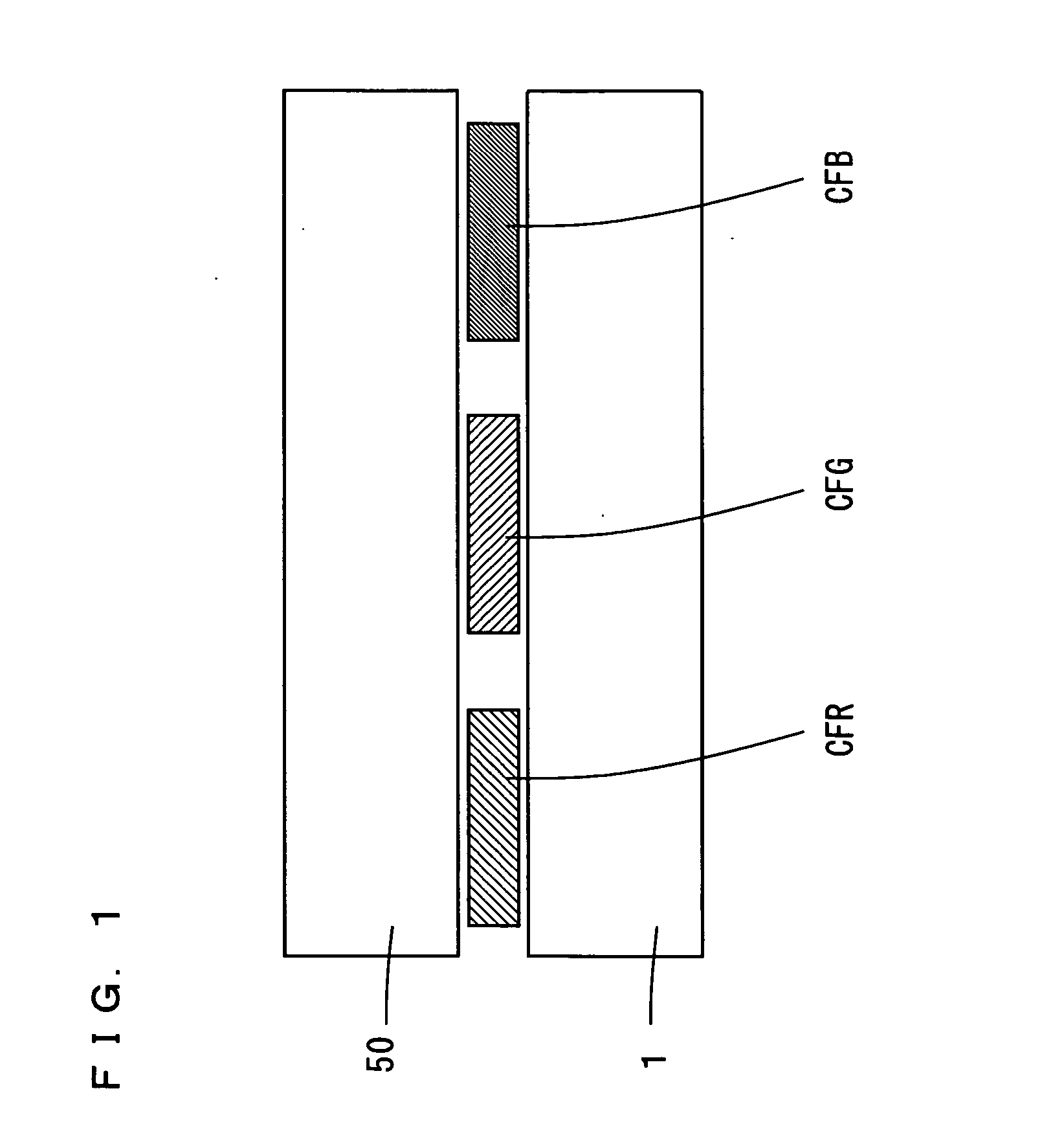Organic electroluminescent display
a technology of electroluminescent display and electroluminescent screen, which is applied in the direction of discharge tube luminescnet screen, discharge tube/lamp details, electric discharge lamps, etc., can solve the problems of complex fabrication process, and achieve good color balance and high color purities
- Summary
- Abstract
- Description
- Claims
- Application Information
AI Technical Summary
Benefits of technology
Problems solved by technology
Method used
Image
Examples
##ventive example 1
Inventive Example 1
[0066] The organic EL display of the inventive example 1 is similar in structure to the organic EL display 100 of the embodiment.
[0067]FIG. 3 is an explanatory diagram that shows the emission spectrum of the light emitting layer 5 in the organic EL display 100.
[0068] The light emitting layer 5 produces light having peak intensities in a wavelength range of not less than 460 nm and not more than 510 nm and a wavelength range of not less than 550 nm and not more than 640 nm, respectively, as shown in FIG. 3.
[0069]FIG. 4 is an explanatory diagram that shows the transmittances of the red color filter layer CFR, green color filter layer CFG, and blue color filter layer CFB in the organic EL display 100.
[0070] The red color filter layer CFR has a transmittance of 50% or more in a wavelength range of not less than 580 nm and not more than 660 nm and a transmittance of 10% or less in a wavelength range of not less than 400 nm and not more than 550 nm. The green color ...
##ventive example 2
Inventive Example 2
[0084] The differences between the organic EL display of the inventive example 2 and the organic EL display 100 used in the inventive example 1 will be described referring to the drawings below.
[0085]FIG. 6 is an explanatory diagram that shows the intensities of the emission spectrum of the light emitting layer 5 in the organic EL display of this inventive example.
[0086] The light emitting layer 5 produced light having peak intensities in a wavelength range of not less than 460 nm and not more than 510 nm and in a wavelength range of not less than 550 nm and not more than 640 nm, respectively. The luminous efficiency of the light was 13.4 cd / A.
[0087] The ratio of an intensity value of the light emitted from the light emitting layer 5 at a wavelength of 575 nm to an intensity value of the light emitted at a wavelength of 475 nm (which will hereinafter be referred to as an intensity ratio) was 1.47.
[0088] The luminous efficiencies of the lights passed through th...
##ventive example 3
Inventive Example 3
[0094] The differences between the organic EL display of the inventive example 3 and the organic EL display used in the inventive example 2 will be described referring to the drawings below.
[0095]FIG. 8 is an explanatory diagram that shows the intensities of the emission spectrum of the light emitting layer 5 in the organic EL display of this inventive example.
[0096] As shown in FIG. 8, the light emitting layer produced light having peak intensities in a wavelength range of not less than 460 nm and not more than 510 nm and in a wavelength range of not less than 550 nm and not more than 640 nm, respectively. The luminous efficiency of the light was 12.1 cd / A. The intensity ratio was 1.00.
[0097] The luminous efficiencies of the lights passed through the red color filter layer CFR, green color filter layer CFG, and blue color filter layer CFB, respectively, were measured with a luminance meter. The luminous efficiency of the light passed through the red color filt...
PUM
 Login to View More
Login to View More Abstract
Description
Claims
Application Information
 Login to View More
Login to View More - R&D
- Intellectual Property
- Life Sciences
- Materials
- Tech Scout
- Unparalleled Data Quality
- Higher Quality Content
- 60% Fewer Hallucinations
Browse by: Latest US Patents, China's latest patents, Technical Efficacy Thesaurus, Application Domain, Technology Topic, Popular Technical Reports.
© 2025 PatSnap. All rights reserved.Legal|Privacy policy|Modern Slavery Act Transparency Statement|Sitemap|About US| Contact US: help@patsnap.com



